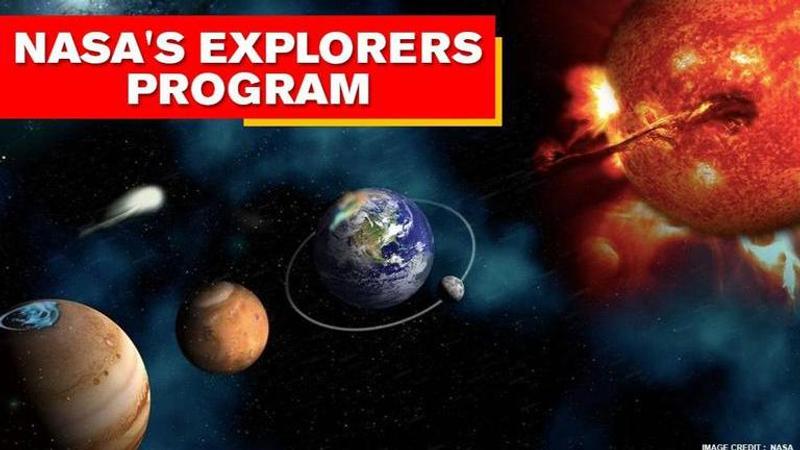Published 13:23 IST, August 31st 2020
NASA proposes Explorers' Program missions to stuy dynamics of the Sun
Space agency said that program will fill ‘science gaps’ between NASA’s larger missions and provide innovative ideas for small and cost-constrained missions.

On August 31, NASA announced that it has initiated at least nine proposals under its Explorers Program for the research on the transformational science about the Sun and space environment. In a release, the space agency said that the program will fill ‘science gaps’ between NASA’s larger missions and provide innovative ideas for small and cost-constrained missions. The scientists will conduct research and studies in vital and specialized areas such as heliophysics. Of the total, as many as eight missions will focus on scientific investigations and one for technological development of instrumentation as per NASA.
“The Explorers Program seeks innovative ideas for small and cost-constrained missions that can help unravel the mysteries of the Universe,” said Paul Hertz, director of NASA’s Astrophysics Division and the selection official.
“These missions absolutely meet that standard with proposals to solve mysteries about the Sun’s corona, the Earth’s atmosphere and magnetosphere, and the solar wind.”
Under NASA’s proposals, 5 Heliophysics Small Explorer missions, and two Explorer Missions of Opportunity Small Complete Missions (SCM), concept studies will be conducted. Further, other studies will be conducted in areas such as terrestrial weather in the near-Earth space environment; magnetic energy; solar wind; and heating and energy released in the solar atmosphere. While NASA’s smaller projects might cost an estimated $165 million each, the larger Mission of Opportunity might cost the agency around $55 million each. Additionally, NASA revealed that $1.25 million will be dedicated to the Heliophysics Small Explorer mission for an 11-month mission concept study.
[NASA has chosen two new science proposals for nine-month concept studies to advance our understanding of how the particles and energy in space – shown here flowing from the Sun in an illustration of the solar wind – affect the fundamental nature of space. Credit: NASA]
[NASA has chosen three mission proposals for concept studies to help us better understand the dynamic space weather system driven by the Sun that manifests near Earth. Credit: NASA]
“A Partner Mission of Opportunity (PMO) proposal has been selected for components and scientific analysis for three in situ payload instruments aboard the Turbulence Heating ObserveR (THOR) mission – one of four proposed missions currently under consideration by ESA (European Space Agency).
After ESA’s final selection, work will begin on implementation of the PMO only if THOR is selected,” NASA wrote in the release.
The THOR mission provides components and scientific analysis for an investigation into how plasma is heated and accelerated by the dissipation of turbulent fluctuations through kinetic processes. THOR-US study was conducted prior to the NASA’s Explorer Program by Harald Kucharek at the University of New Hampshire in Durham. Other than that a COronal Spectrographic Imager in the Extreme ultraviolet (COSIE) study would provide a missing link between the physics of the low corona and that of the heliosphere with a unique and innovative instrument based on the International Space Station. The study will be conducted by Leon Golub at the Smithsonian Institution/Smithsonian Astrophysical Observatory in Cambridge, Massachusetts.
[Million-degree plasma in the sun's atmosphere began to cool and fall to the surface, resulting in a dazzling magnetic display known as coronal rain. Credit: NASA]
Further, the Mechanisms of Energetic Mass Ejection – eXplorer (MEME-X), study will involve the mapping of the universal physical processes of the lower geospace system that will help to understand how ions leave Earth’s atmosphere. This study would be conducted by Thomas Moore at NASA’s Goddard Space Flight Center in Greenbelt, Maryland. FOXSI is a solar-dedicated, direct-imaging, Hard X-Ray telescope that will detect hot plasma and energetic electrons around the sun at Goddard.
Filling fundamental gaps in knowledge
NASA's Multi-Slit Solar Explorer (MUSE) study is aimed at advanced understanding of complex mechanisms of the sun, which will be conducted by Lockheed Martin Inc. in Palo Alto, California. Tandem Reconnection and Cusp Electrodynamics Reconnaissance Satellites (TRACERS) study by the University of Iowa will fill a fundamental gap in knowledge of the global variability in magnetopause reconnection. Polarimeter to Unify the Corona and Heliosphere (PUNCH) is dedicated to the coronal structures fuel the ambient solar wind. The other studies namely Sun Radio Interferometer Space Experiment (SunRISE) and Atmospheric Waves Experiment (AWE) will focus on the sun’s critical heliophysics problems regarding how solar energetic particles are accelerated and released and the solar atmospheric gravity waves.
Updated 13:23 IST, August 31st 2020






